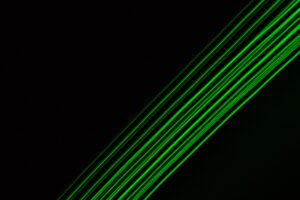

The principle of fiber laser operation is based on converting relatively low-brightness pump light emitted by laser diodes into high-brightness output, where the output laser beam quality is often the only spatial mode enabled by the physics of the fiber laser system design. The uniqueness of fiber lasers among other types of lasers includes such features as a sealed optical cavity and a single-mode, guided-wave medium.
It should be noted that a sealed optical path in modern fiber laser systems provides immunity to environmental contamination and enables not to carry out any adjustment. High-power laser system’s components include single-mode laser modules into high-brightness delivery fiber in fused fiber combiners. Thus, fiber lasers are considered to be a highly reliable laser technology that offers minimal variation over time and temperature.
The thing is that the use of sealed pump diodes and non-darkening fiber optic technology creates a laser system that is possible to be used continuously in production for years without any adjustment or degradation. For example, numerous industrial manufacturers use fiber lasers or disk lasers for metal cutting and welding because of the practically equal power, laser beam quality, wavelength, reliability, and beam delivery options.
The most common applications of fiber laser systems include high-speed remote welding because there is no need for the contact process during laser system welding, that is why the laser technology includes no tool wear. Additionally, fiber lasers allow the joining of various materials due to the brightness and dynamic capabilities of laser systems that were considered to be unweldable before.
Also, now it is possible to employ the same fiber laser in the same optical configuration for a different range of materials processing applications by simply controlling both the laser beam pulse parameters and the scanhead toolpath. One more laser application is cleaning and drilling that were a real challenge for industrial laser systems because they had to deal with a significant variation of target materials.
Therefore, such qualities of modern fiber lasers as the brightness, stability, and flexibility extend the present material processing applications and create new ones. Fiber laser technology is perfect for manufacturing with identical laser beam properties from unit to unit, with no field adjustment or maintenance.
Optromix is a fast-growing fiber laser manufacturer and a vendor of optical fiber sensors and optical monitoring systems. The company offers fast turnkey solutions and creates sophisticated fiber laser systems for special purposes. Optromix uses only its own technologies and develops a broad variety of fiber lasers. If you have any questions or would like to buy a laser system, please contact us at info@optromix.com




